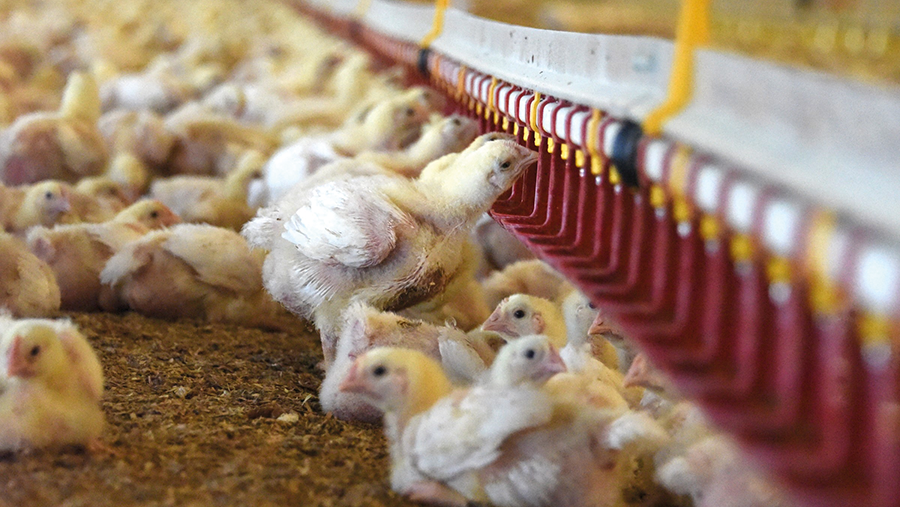How poultry assurance scheme can slash permit costs
 © Red Tractor
© Red Tractor Poultry farms with more than 40,000 bird places could save £940/year on Environment Agency (EA) charges by signing up to a new assurance scheme.
Farms with units of this size legally require the New Bespoke Intensive Farming Installation (Part B3.5) environmental permit.
Because application and inspection charges are high, the EA launched the scheme as a financial incentive to encourage high levels of compliance.
See also: Expert advice for preventing vermin issues on poultry farms
We explain how it works and what farmers have to do to claim it.
How does it work and what are the benefits?
Every farm that joins the initiative, known as the Pig and Poultry Assurance Scheme (PPAS), also faces fewer EA inspections, which are reduced from annual visits to just once every three years.
The farm then nominates a certification body (CB), such as Red Tractor.
The EA shares a copy of the farm’s environmental permit with the nominated CB, which carries out annual visits between EA inspections. The CB will charge for these visits.
To minimise disruption, scheme members can arrange joint inspections with other assurance schemes, such as Red Tractor and the Lion Code of Practice, saving time and reducing biosecurity risks.
Farms don’t need to be a member of any other assurance scheme to join and can leave the scheme partway through the year, although they will incur the higher non-member EA charges.
Who can join?
To be eligible for the scheme, a farm must:
- Have had at least two EA inspections since its environmental permit was issued
- Comply with permit condition 1.1 by identifying the risks activities pose to the environment and taking all reasonable actions to prevent or minimise them
- Implement all improvement conditions within the approved timescale.
The farm must not:
- Have an improvement condition relating to ammonia emissions
- Be subject to outstanding enforcement action by the EA
- Be operated by someone who has, in relation to that farm, received an EA conviction in the previous three years, or have accepted a formal caution in relation to such an offence in the previous two years
- Have more than 10 Compliance Classification Scheme points in the past calendar year
- Have any unresolved amenity issues or be a site of high public interest
- Be in arrears for Environmental Permitting Regulations (EPR) charges.
Farm visits and results
The purpose of all environmental inspections is to assess whether a farm is complying with its permit.
The CB must use the scheme standards and inspection form on its farm visits, and outcomes are recorded in writing:
- Compliance met – no further action until the next inspection unless a complaint or incident is reported
- Areas of non-compliance, but already in an agreed correction plan with the EA
- Non-compliance that is not already being dealt with in a correction plan.
The EA assesses the information collected by CBs and may decide to visit the farm to address urgent non-compliance incidents.
Scheme expulsion
Farms can be expelled from the scheme; reasons include:
- Non-compliance with EA notices, including enforcement
- Prosecution by the EA or acceptance of a formal breach caution
- Gross failure of permit condition 1.1 (as outlined above)
- Farm is transferred to another operator
- Doesn’t have a CB visit when it’s due, fails to co-operate with the CB to arrange visits or provide access to relevant areas and records, or does not pay for a visit
- Improvements are not made to rectify non-compliance within agreed timescales or refusal to agree reasonable timescales
- Not paying EPR charges
- Becomes a site of high public interest.
How to apply
Farms are assessed in January and invited by the Environment Agency to join from each April.
Farmers should contact one of the approved certification bodies for more details.
If the farm has been transferred to a new operator, it can remain in the scheme, but the next two visits must have a Compliance Classification Scheme score of <10 points.
For more information, visit Guidance: Pig and Poultry Assurance Scheme
